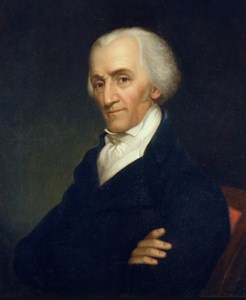
James Bogle, after John Vanderlyn, 1861 Independence National Historical Park Representation in the Legislature
"…unless a system of government is adopted by Compact, Force I expect will plant the Standard…"
-Elbridge Gerry to James Monroe
Roger Sherman (CT) moved that it be proportional in the first house, and by state with one vote per state in the Senate. John Rutledge (SC) and Pierce Butler (SC) wanted representation based on how much money each state contributed. After extensive and heated debate, the Committee decided that representation should not be as it was under the Articles [one vote for each state], but rather that it should be based on free population plus 3/5 of "all others," and, finally, that it should be the same in both houses. Sherman's motion that each state have an equal vote in the Senate was defeated. James Madison's (VA) position that both houses of the legislature be apportioned by population continued to carry the most weight for the moment. Roger Sherman proposed what becomes the Great Compromise - one house by population and the other equal by state. The issue of how to count slaves- "other persons"- toward apportionment is brought forward, and again what becomes the 3/5 Compromise is presented to the committee and adopted. |
Last updated: February 26, 2015
